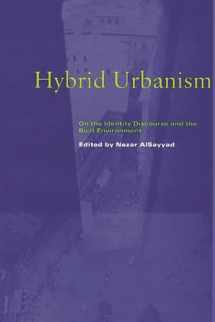
Hybrid Urbanism: On the Identity Discourse and the Built Environment
Book details
Summary
Description
Despite strong forces toward globalization, much of late 20th century urbanism demonstrates a movement toward cultural differentiation. Such factors as ethnicity and religious and cultural heritages have led to the concept of hybridity as a shaper of identity. Challenging the common assumption that hybrid peoples create hybrid places and hybrid places house hybrid people, this book suggests that hybrid environments do not always accommodate pluralistic tendencies or multicultural practices. In contrast to the standard position that hybrid space results from the merger of two cultures, the book introduces the concept of a third place and argues for a more sophisticated understanding of the principal.
In contributed chapters, the book provides case studies of the third place, enabling a comparative and transnational examination of the complexity of hybridity. The book is divided into two parts. Part one deals with pre-20th century examples of places that capture the intersection of modernity and hybridity. Part two considers equivalent sites in the late 20th century, demonstrating how hybridity has been a central feature of globalization.


We would LOVE it if you could help us and other readers by reviewing the book
Book review



